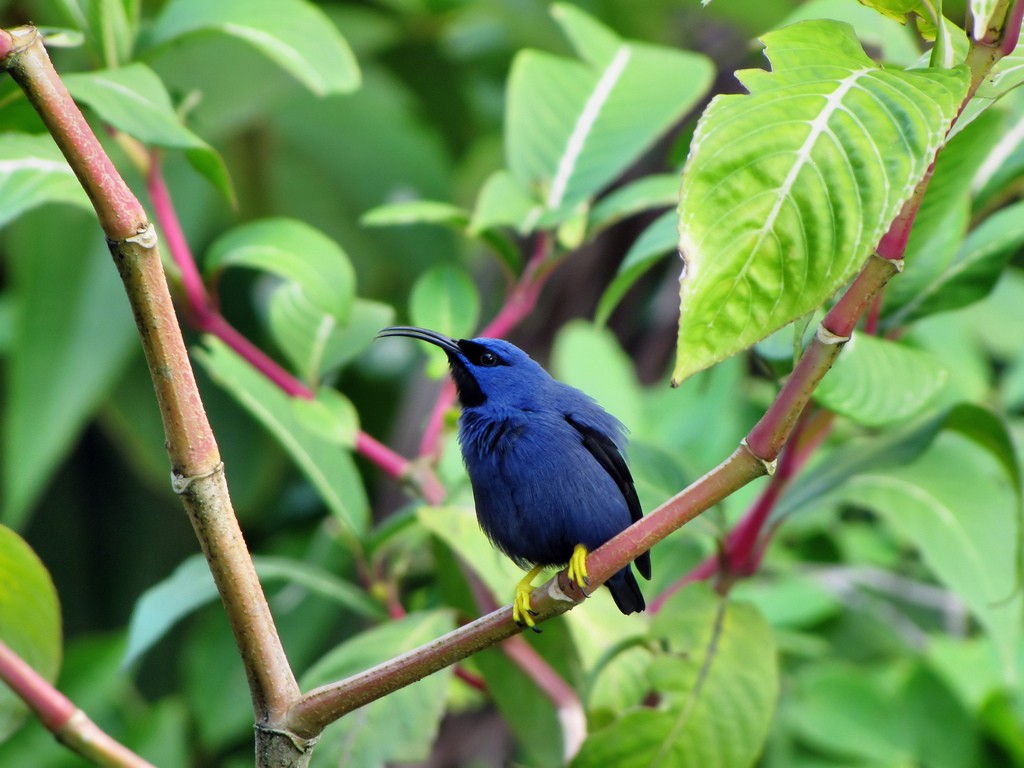Purple Honeycreeper
A species of Typical Honeycreepers Scientific name : Cyanerpes caeruleus Genus : Typical Honeycreepers
Purple Honeycreeper, A species of Typical Honeycreepers
Botanical name: Cyanerpes caeruleus
Genus: Typical Honeycreepers
Content
Description General Info
Description
The purple honeycreeper is 4.5 in (11.5 cm) long, weighs 0.42 oz (12 g) and has a long black decurved bill. The male is purple with black wings, tail and belly, and bright yellow legs. Females and immatures have green upperparts, and green-streaked yellowish-buff underparts. The throat is cinnamon, and there is a blue moustachial stripe. The call of purple honeycreeper is a thin high-pitched zree. The Trinidadian subspecies C. c. longirostris has a longer bill than the mainland forms. 
Size
10 cm
Life Expectancy
17 years
Nest Placement
Tree
Feeding Habits
Purple Honeycreeper primarily enjoys a varied diet of insects, spiders, arthropods, nectar, and small fruits. Its foraging tactics capitalize on its agility, typically indulging at dawn or dusk. Distinctively, purple Honeycreeper possesses a specialized tongue for nectar extraction, reflecting an adaptation for certain flowers.
Habitat
Purple Honeycreeper typically inhabit tropical regions, thriving in various forest types including lowland evergreen, flooded evergreen, secondary, and montane forests. They are also found in human-modified landscapes such as agricultural lands and gardens, extending to natural forest edges like riverbanks and tree fall gaps. Geographically, they favor the middle to upper forest canopies, often associated with dense foliage, epiphytes, and areas that offer abundant fruit. Though occasionally descending for fallen fruit, purple Honeycreeper generally forage at higher canopy levels.
Dite type
Frugivorous
General Info
Feeding Habits
Bird food type

Fruit
Distribution Area
The species is a bird of northern South America, and besides the Amazon Basin and the Guianas, a coastal range occurs west of the Andes, including parts of southern Panama. In the south, its range extends to the extreme western Pantanal. Though it is most frequently seen in the lowlands up to 3,300 ft (1,000 m) ASL or so, it has been encountered as high as 7,500 ft (2,300 m) ASL. This is a forest canopy species, but also occurs in cocoa and citrus plantations. At the upper limit of its altitudinal range, it frequents premontane rainforest, usually rather low-growing (33–50 ft/10–15 m) and full of epiphytes and mosses, and even elfin forest and páramo. 
Species Status
Not globally threatened.
Scientific Classification
Phylum
Chordates Class
Birds Order
Perching birds Family
Tanagers Genus
Typical Honeycreepers Species
Purple Honeycreeper 